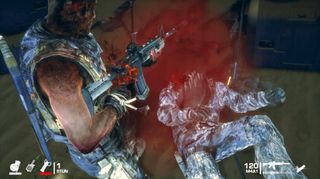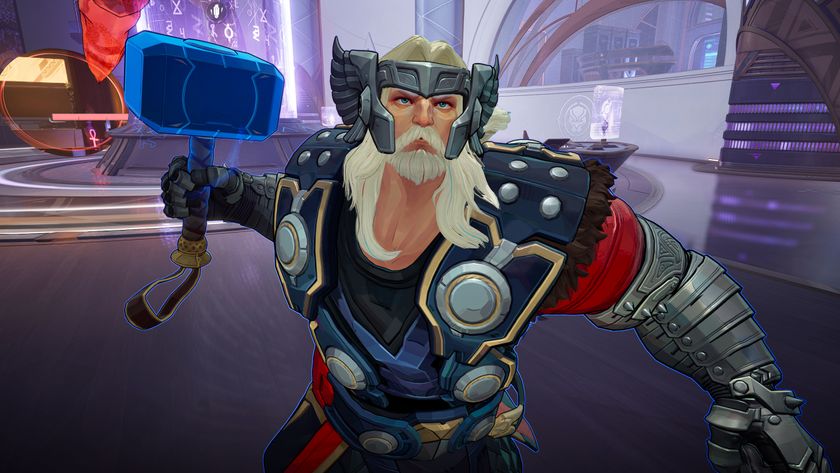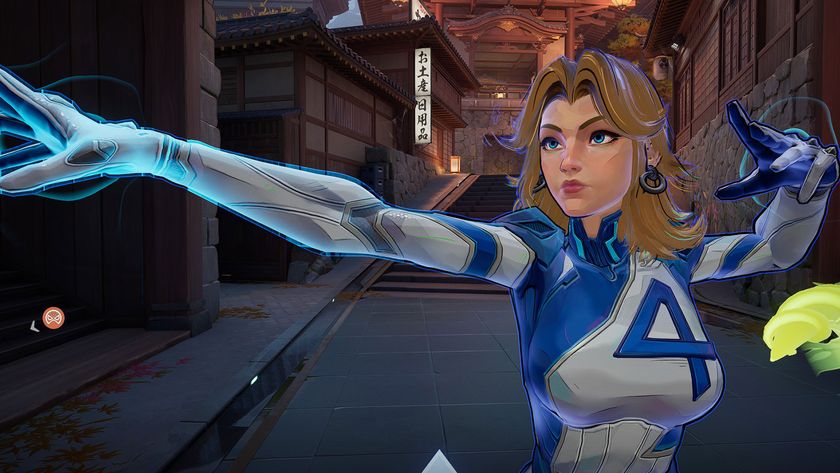Now Playing: Spec Ops' most troubling scene

In Now Playing PC Gamer writers talk about the game currently dominating their spare time. Today, Sam confronts Spec Ops' most controversial moment.
This article contains story spoilers for Spec Ops: The Line.
Spec Ops: The Line is clearly a smart game written by smart people. While as an adaptation of Heart of Darkness it’s never as successfully weird or iconic as Apocalypse Now (despite making similar creative decisions), it’s daring and ambitious in the way it portrays US military intervention in the midst of escalating chaos. I’ve thought about the story a lot since I completed it recently. But what I interpret as its central conceit—that the player is the one making the decision to push forward and cause every conflict, and is thus the villain of the story—isn’t really supported by the game itself. This is especially highlighted by the notorious white phosphorus scene halfway through, where protagonist Captain Walker and his two squadmates accidentally wipe out civilians with a real life weapon that burns flesh to the bone.
Spec Ops wants to make a BioShocklike message about human behaviour and choice, but in this key moment, there is no choice to be made. I’m at the top of a building looking down into an enclosed bowl where an army of enemies is about to be ambushed by one of the worst weapons on this planet. I man the artillery, which triggers a bird’s-eye targeting camera, and bring fire down upon scores of enemy troops. I figure out where the civilians are cowering, in a trench near the back of the field of conflict, and aim around them—but it doesn’t matter. The radius of the white phosphorus impact automatically extends to scorch the group of innocents, and while this is a story beat that’s technically interactive, it needs to happen no matter what. I tried not to hit them, but I was always going to.
The cutscene that follows shows the full extent of the carnage: charred corpses everywhere and the distressing image of a dead mother hugging her child, both burnt alive. If Call of Duty did this, there’d be uproar. It’s to the credit of Yager, the developer, that the context justifies the horror in this case.

But the fact remains that I didn’t kill those civilians—Yager forced that outcome. While the aftermath still makes me uncomfortable, the fact that I was aiming around the civilians absolves me of guilt as a player—and I’m not sure that was the intent. There’s a strong narrative emphasis on the escalating madness in Dubai being of Walker’s making, but lacking choice, I start to grow apart from that character.
The only choice I get to make comes in the aftermath, as I slowly tread through the blackened corpses and stick a bullet in anyone unfortunate enough to have survived. That’s power put back into my hands as a player—I choose to kill those civilians to make up for Walker’s poor choice with the white phosphorus. But again: that was his decision, not mine. It was Spec Ops’ most important narrative moment and they took it out of my hands. The impact is extraordinary, but had they genuinely hoodwinked me into killing civilians, it could’ve lived with me forever.
And unlike BioShock, where the entire game is built to support a killer twist for the ages, in Spec Ops it becomes increasingly obvious that these are not my choices. Consequently, inspiring an equal reaction is impossible—Captain Walker is not me. I am grateful that Yager tried to do something so different with a military shooter, exploring an angle that makes every modern FPS seem gaudy to me in the way they present war, even with that clash between player and character in mind. I only hold this story to a higher standard than I usually would because I feel the developers have earned it.
The biggest gaming news, reviews and hardware deals
Keep up to date with the most important stories and the best deals, as picked by the PC Gamer team.
Most Popular







